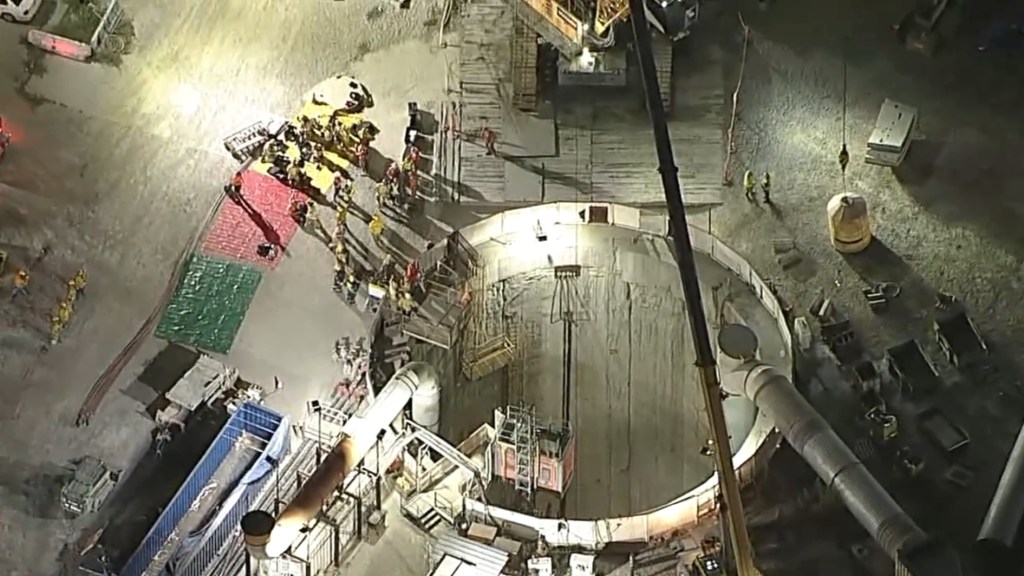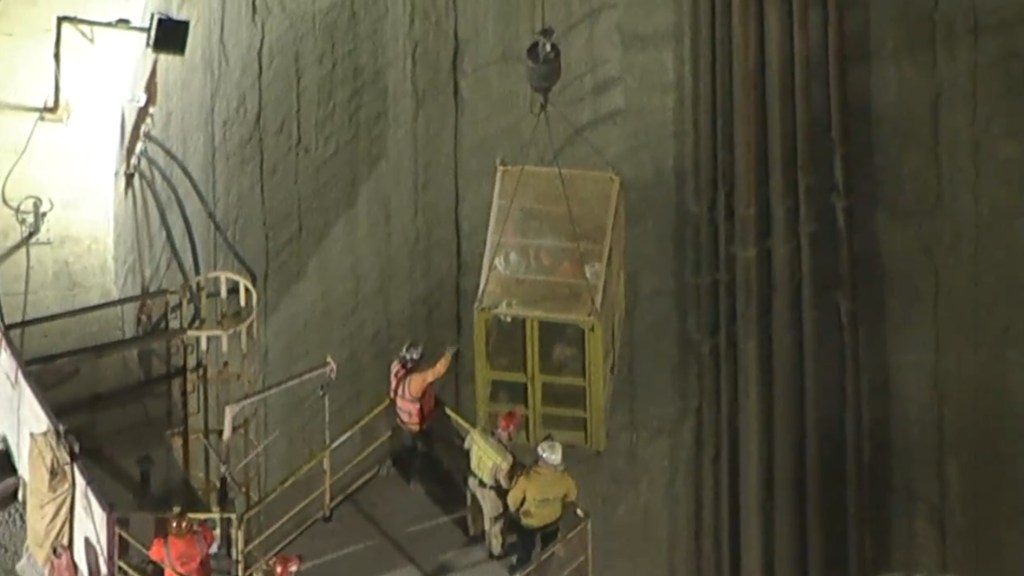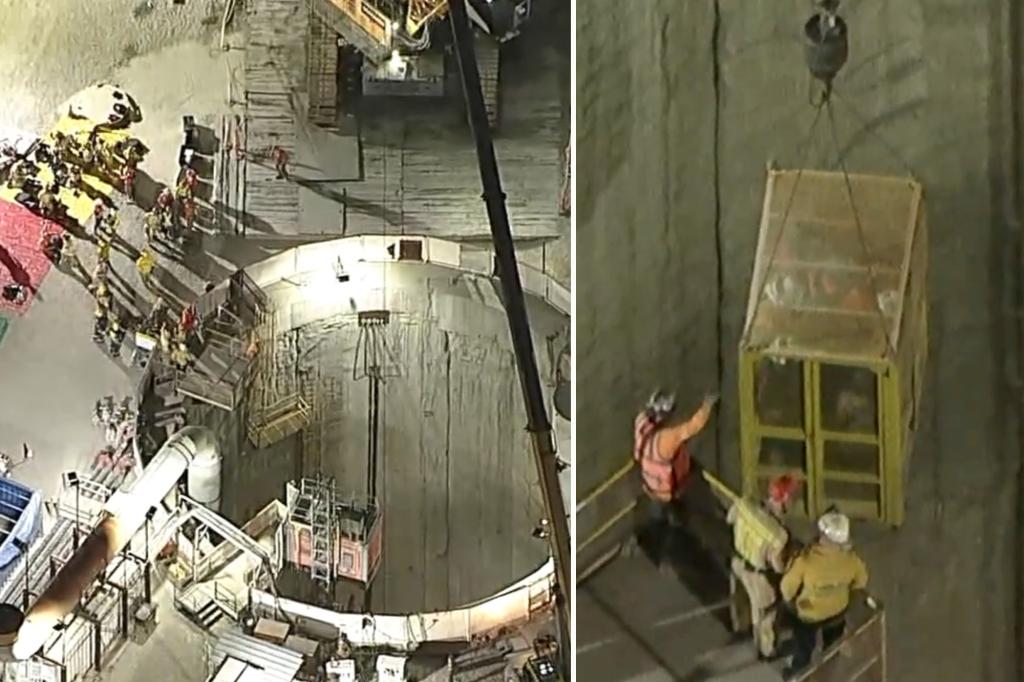Thirty-one construction workers were rescued when an underground industrial tunnel they were working in collapsed in Los Angeles Wednesday night.
The workers were inside the tunnel, 300 to 400 feet below the surface, just before 8 p.m., when the collapse occurred, the Los Angeles Fire Department said.
A 12 to 15-foot mound of dirt separated some of the workers from the main group in the 18-foot diameter, underground shaft in the Wilmington neighborhood.
The trapped workers managed to climb over the tall barrier to regroup with others in the tunnel.
Officials were unsure how large the collapse was and didn’t release the cause of the collapse.
 Thirty-one workers became trapped when a tunnel collapsed in Los Angeles’ Wilmington area on Wednesday night. KABC
Thirty-one workers became trapped when a tunnel collapsed in Los Angeles’ Wilmington area on Wednesday night. KABC
The workers took turns taking shuttle carts back to the only entry/access point in the tunnel, five to six miles from the site of the collapse.
Cranes were used to hoist the workers to the surface.
Over 100 first responders were at the scene to meet the freed crew and conduct medical evaluations.
 The workers had been working inside a tunnel that was being constructed for wastewater management. KABC
The workers had been working inside a tunnel that was being constructed for wastewater management. KABC
There were no signs of “visible injuries,” the LAFD reported.
Los Angeles Mayor Karen Bass was at the scene, speaking with several of the rescued workers hours after the collapse.
“I just spoke with many of the workers who were trapped. Thank you to all of our brave first responders who acted immediately. You are LA’s true heroes,” she wrote on X.
The tunnel is being constructed for municipal waste management, part of the $630.5 million Los Angeles Effluent Outfall Tunnel.
The tunnel project was greenlit in April 2019, with construction on the shaft’s opening beginning in 2020.
Mining officially began on the main tunnel in January 2022.
It is planned to stretch 7 miles from the Carson shaft site to Royal Palms Beach, according to the LA County Sanitation District’s Clearwater Project.
The goal of the project is to update the aging infrastructure built in 1937 and 1958, make the sewage system more efficient in the earthquake-prone area and update the capacity that the current tunnels can hold.
